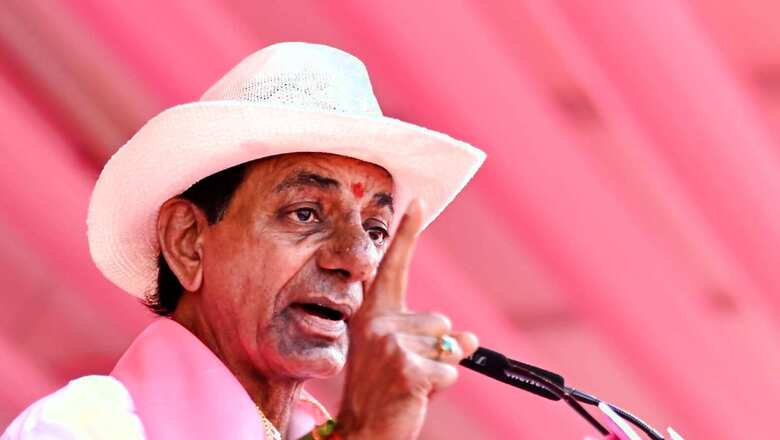
views
With an eye on the next Lok Sabha elections, Telangana Chief Minister K Chandrashekhar Rao, who has been meeting several Opposition leaders to put up a united front against the Bharatiya Janata Party (BJP) in 2024, has recently rechristened his Telangana Rashtra Samithi (TRS) as the Bharat Rashtra Samithi (BRS).
KCR founded the TRS on April 27, 2001 with a demand for the separate state of Telangana. His dream was realised in 2014 when the Congress-led UPA government carved Telangana out of Andhra Pradesh. Since then, KCR’s party has been winning elections in Telangana.
As KCR formally decided to take the leap to the national stage after two decades, the road for the BRS to become a “national party” recognised by the Election Commission is not easy.
Here’s a look at what the EC rules say about a political party hoping to get a “national party” status
The recognition of political parties as State Party or National Party is governed by the provisions of Paragraphs 6A and 6B of the Election Symbols (Reservation and Allotment) Order, 1968
How Can a Party Get ‘National Party’ Status?
A political party shall be eligible to be recognised as national party, if, and only if, any of the following conditions is fulfilled:
- The party is recognised as “state party” in at least four states.
- The party candidates contesting elections in any four or more states have secured at least 6% of the total valid votes polled in each of those States in the last Assembly as well as Lok Sabha elections. In addition, at least four of these candidates should be elected to the Lok Sabha from any of these states.
- The party has won at least 2% of the total Lok Sabha seats in the last election and the party’s candidates have been elected to that House from not less than three States.
National Parties in India
Indian National Congress, Bharatiya Janata Party (BJP), Trinamool Congress, Bahujan Samaj Party (BSP), Communist Party of India, Communist Party of India (Marxist), Nationalist Congress Party, and National People’s Party are eight parties recognised as the “national party” by the EC.
Aam Aadmi Party (AAP), which is in power in Delhi and Punjab, is also on its way to become a national party. Founded in 2012 after the Jan Lokpal movement, the AAP has been recognised as state party in Goa after the Assembly elections earlier this year. Now, the Arvind Kejriwal-led party needs “state party” recognisition in one more state to get a “national party” status. The party will be contest the Assembly elections in Himachal Pradesh and Gujarat later this year.
Why Road Ahead is Tough for BRS
Since its inception, the TRS has focused on the issues of Telangana with its leader KCR leading from the front. The party does not have cadre base in other states, an edge which the national parties have in the Lok Sabha elections. The BRS’s announcement to contest the 2024 Lok Sabha elections seems like a gamble similar to what Arvind Kejriwal’s AAP did in 2014. With only two years of years in electoral politics, the AAP contested over 400 seats in the 2014 polls and faced a humiliating defeat winning only four seats.
The BRS will need to work from the scratch and to prepare the ground within two years seems like a herculean task. KCR’s Hindi language skills may come in handy while campaigning in the Hindi belt states of Uttar Pradesh and Bihar which together send 120 parliamentarians to the Lok Sabha. But besides KCR, his party does not have a pan India leader.
After the renaming, KCR’s son and BRS leader K T Rama Rao noted that Telugu films were doing well pan-India and sought to know why a Telugu party or leader would not get acceptance if there is intrinsic strength.
Read all the Latest Politics News and Breaking News here




















Comments
0 comment